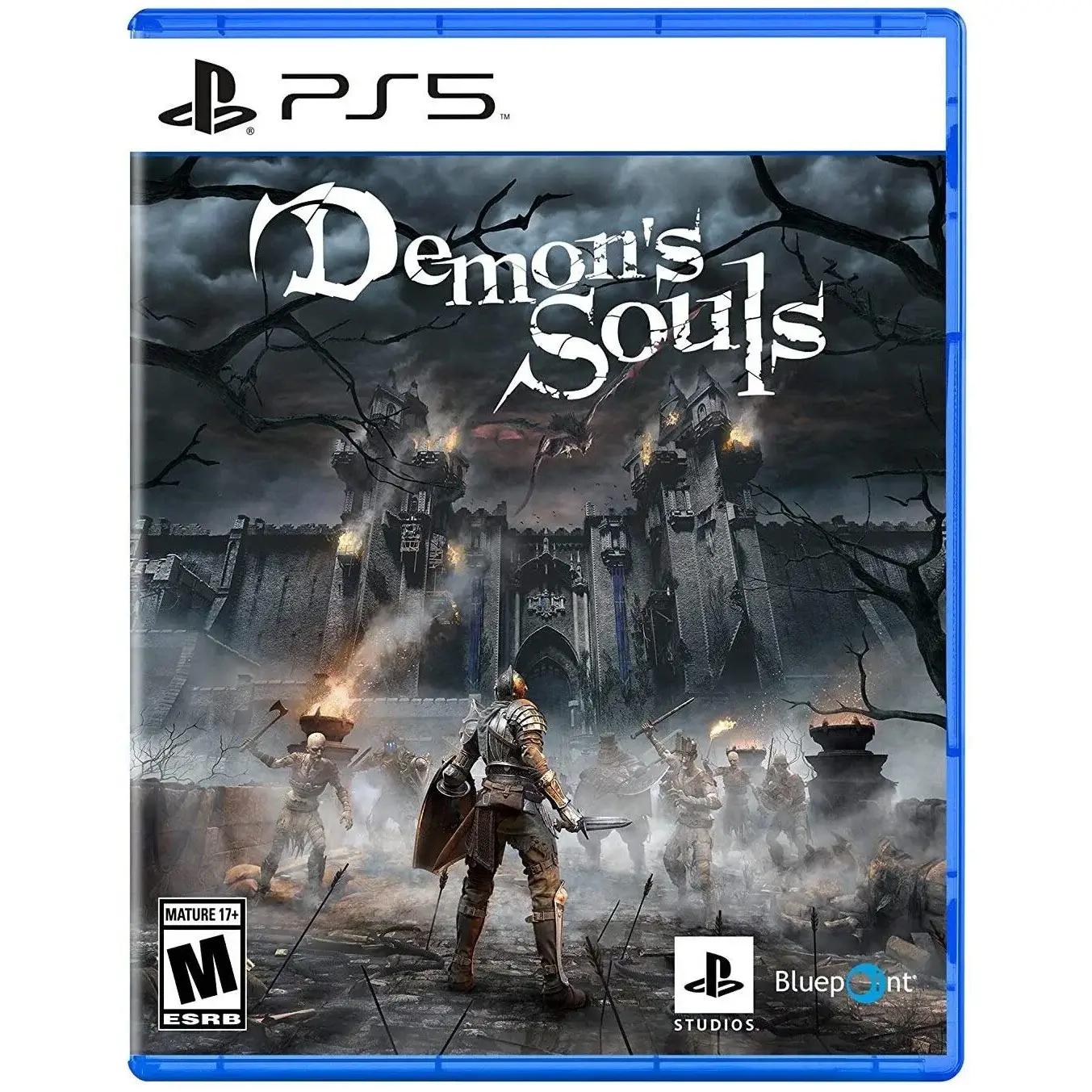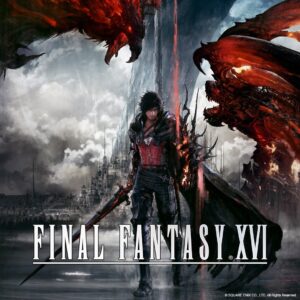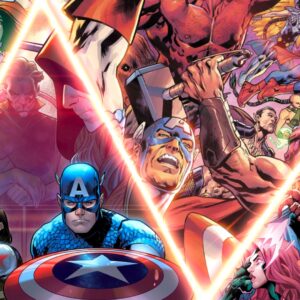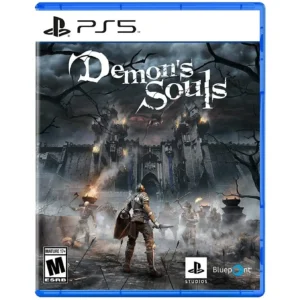A demon is often depicted as a malevolent supernatural being, typically associated with evil, chaos, and temptation in various mythologies and religious traditions. They are characterized by their ability to influence human behavior, often leading individuals astray or causing harm. In popular culture, demons might appear as grotesque creatures or seductive figures, embodying humanity’s fears and moral struggles. Their portrayal varies widely, from the vengeful spirits of folklore to the more nuanced representations found in literature and film, where they may explore themes of redemption and conflict between good and evil.
Demon’s Souls Price in Pakistan
Current Price: ₨ 12,500
Below is the summary of current prices of Demon’s Souls in Pakistan
- Lowest Price of Demon’s Souls: Rs 500
- Highest Price of Demon’s Souls: Rs 25,000
- Average Price of Demon’s Souls: Rs 12,500
Demon’s Souls Price Comparison in Pakistan
Explore the latest prices for the iPhone 14 Pro Max across various trusted retailers in Pakistan. Below is a comprehensive list detailing the current prices from multiple websites, giving you the best options to choose from. Whether you’re looking for the lowest price or the best deal, we've got you covered!
| No. | Website Logo | Website | Price |
|---|
Demon: An Intriguing Exploration of the ConceptThe concept of a demon transcends mere representation in folklore and fiction; it embodies deep-seated fears, moral dilemmas, and the multifaceted nature of good and evil. Across various cultures and religions, demons are often portrayed as malevolent entities, serving as embodiments of chaos, temptation, and moral corruption. Yet, the idea of a demon encompasses a wide range of interpretations, from the classic archetypes of the devil in Christianity to more nuanced representations in modern media and literature.### Historical and Cultural ContextHistorically, demons have been integral to many religious narratives. In ancient Mesopotamia, demons were often seen as dark intermediaries between gods and humans, responsible for illness and misfortune. Similarly, in Hinduism, dark spirits known as “asuras” embody challenges to cosmic order, standing in opposition to the divine forces of the “devas.” In each of these beliefs, demons serve not only as antagonistic forces but also as reflections of human experiences and emotions—fear, anger, jealousy, and despair.### Theological PerspectivesIn Christianity, the concept of demons is closely tied to the idea of sin and moral deviation. Traditionally, they are viewed as fallen angels, cast out of heaven due to their rebellion against God. They are depicted as tempters, seeking to corrupt the souls of the faithful through sin and moral ambiguity. This interpretation illustrates the constant battle between good and evil, with demons as the agents that strive to lead humanity astray. Their existence serves to reinforce moral teachings, encouraging believers to adhere to virtuous behavior in the face of temptation.In contrast, some Eastern philosophies approach demons with greater complexity. In Buddhism, for instance, mara—as figures representing distraction and temptation—are understood as a part of the inner struggles humans face on their path to enlightenment. This emphasizes the internal battle against one’s own desires and delusions rather than an externalized evil.### Literary and Artistic RepresentationsIn literature and the arts, demons have often been wielded as symbols for exploring deeper human psychology and societal issues. From Milton’s “Paradise Lost,” where Satan embodies the dualities of freedom and tyranny, to Dante’s “Inferno,” which portrays demons as manifestations of human vice and punishment, these representations often challenge readers to reflect on their own moral choices and existential realities.In contemporary media, demons have been reimagined in a myriad of forms, from the monstrous to the alluring. In popular culture, films and television shows often depict demons as both fearsome monsters and complex characters with backstories and motivations that resonate with audiences. This duality underscores a shift from viewing demons solely as embodiments of evil to understanding them as reflections of inner turmoil, societal fears, and personal struggles.### The Psychological DimensionThe psychological interpretation of demons is particularly intriguing. Carl Jung, the Swiss psychiatrist, proposed that demons represent the shadow self—the darker, unacknowledged aspects of human nature. This view posits that confronting and integrating these “demons” is essential for personal growth and wholeness. In this context, demons become symbols of the fears and traumas that individuals must face to achieve self-acceptance and inner peace.### ConclusionThe study of demons, therefore, is not merely an exploration of supernatural entities but a profound examination of human nature, morality, and the struggle between light and darkness within us all. Whether viewed through the lens of theology, literature, psychology, or culture, demons invite deeper reflection on the complexities of existence, the nature of evil, and the paths to redemption and understanding. As society continues to evolve, so too will the interpretations of demons—remaining ever relevant as metaphors for the battles we face both internally and in the world around us.
Demon’s Souls Features
Certainly! Below is a specification for a character or entity classically known as a "demon," often found in fantasy literature, mythology, and various games:---### Specification: Demon**General Overview:**Demons are supernatural beings typically associated with malevolence and chaos. They exist in various cultures' mythologies and are often depicted as adversaries to gods, angels, or humanity. Their portrayals vary from the classical to the modern, encompassing a wide range of characteristics and abilities.**1. Classification:** - **Type:** Supernatural Entity - **Origin:** Mythological/Fantasy - **Alignment:** Typically Chaotic Evil, but can vary (e.g., Neutral, Chaotic Neutral)**2. Physical Characteristics:** - **Form:** Varies widely; can be humanoid, monstrous, or entirely abstract. - **Skin Color:** Usually depicted in colors such as red, black, or green; some may have a more ethereal appearance. - **Eyes:** Often glowing or unnaturally colored (e.g., yellow, white). - **Horns:** Commonly depicted with horns (size and shape vary). - **Wings:** Many have wings (bat-like, feathered, or insect-like). - **Body Structure:** Muscular, grotesque, or slender depending on the depiction.**3. Powers and Abilities:** - **Magic:** Proficient in dark or forbidden magic (e.g., necromancy, illusion). - **Supernatural Strength:** Enhanced physical capabilities compared to humans. - **Teleportation:** Ability to appear and disappear at will, often through portals. - **Possession:** Can inhabit other beings, exerting control over their actions. - **Illusion and Deception:** Can create illusions to mislead or manipulate others. - **Regeneration:** Some demons can heal rapidly from injuries. - **Summoning:** Ability to summon lesser demons or create minions.**4. Behavioral Traits:** - **Cunning and Manipulative:** Skilled in strategy, deceit, and psychological manipulation. - **Chaotic Nature:** Often thrives in chaos, seeking to disrupt order. - **Malice:** Generally harbors ill intentions towards other beings (exploitation, corruption). - **Pact-making:** May offer deals, tempting mortals with power in exchange for their souls.**5. Habitat:** - **Dimension/Realm:** Often inhabit a realm such as Hell, the Abyss, or Shadowlands. - **Physical Locations:** May also be summoned into the mortal world or reside in cursed locations (e.g., haunted areas, ruins).**6. Vulnerabilities:** - **Holy/Divine Magic:** Susceptible or harmed by sacred artifacts or spells. - **Restraint:** Can be bound or sealed by specific rituals or objects. - **Exorcism:** May be expelled from hosts through spiritual practices.**7. Cultural Representation:** - **In Religion:** Depictions in various religions as tempters, destroyers, or embodiments of sins. - **In Literature/Media:** Represented in an array of genres—horror, fantasy, and science fiction. - **In Gaming:** Commonly serve as antagonists, bosses, or ultimate evils that players must confront.**8. Examples in Pop Culture:** - **Literature:** Works by H.P. Lovecraft, Dante’s "Inferno," John Milton's "Paradise Lost." - **Games:** “Diablo” series, “Dungeons & Dragons,” “Doom” franchise. - **Movies:** "The Exorcist," "Constantine," "Hellboy."---This specification can be tailored further depending on the context in which the demon is being utilized, whether for storytelling, role-playing games, or other creative endeavors.
Demon’s Souls Comparision
To create a comparison table of "Demons," we need to clarify which aspects we are comparing. Demons can be analyzed in various contexts, such as mythology, religion, literature, or popular culture. Below is a generalized comparison table that illustrates different characteristics of demons across various contexts:| Aspect | Mythology | Religion | Literature | Popular Culture ||----------------------|----------------------------------|------------------------------------|------------------------------------|----------------------------------|| **Definition** | Supernatural beings causing chaos or mischief. | Evil spirits opposing divine forces. | Characters representing evil or inner turmoil. | Beings with supernatural or sinister traits. || **Origin** | Often rooted in ancient beliefs and folklore. | Emerges from religious texts and beliefs. | Created by authors and poets to explore themes. | Derived from mythology, literature, or original creations. || **Characteristics** | Frequently depicted as malevolent but can have varying traits (e.g., tricksters). | Seen as fundamentally evil, often tempting humans. | May possess human-like qualities, including complexity and depth. | Can be portrayed as villains, anti-heroes, or complex beings. || **Purpose** | Often used to explain misfortune or natural disasters. | To represent moral failings or divine opposition. | To explore conflict, morality, and the human condition. | To entertain, provoke thought, or elicit fear. || **Examples** | Lilith, Asmodeus (Judeo-Christian mythology) | Satan, demons in Christianity & Islam | The demon Mephistopheles in "Faust," demons in "The Inferno" | Demons in "Supernatural," "Hellboy," "Dante’s Inferno" || **Cultural Influence**| Major influence on folklore, literature, and artistic expressions. | Significant in moral teachings and religious narratives. | Frequently utilized in Western literature and poetry. | Strong presence in movies, video games, and graphic novels. || **Symbolism** | Represents chaos, darkness, and human vice. | Often symbolizes sin, temptation, and moral failure. | Typically embodies inner conflict and existential challenges. | Can symbolize fear, rebellion, or the fight against evil. |Feel free to specify further or adjust the table to focus on particular types of demons or characteristics!












Reviews
There are no reviews yet.